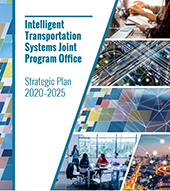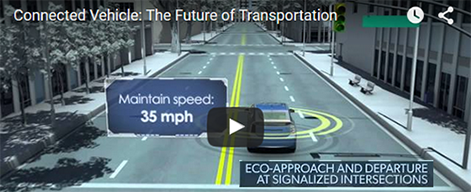Research Archive
Research Plan

The objective of the Safety Pilot Program is to evaluate everyday drivers’ reactions, both in a controlled environment through driver clinics and on actual roadways with other vehicles through the real-world model deployment.
- Safety Pilot Driver Clinics: Clinics include six different sites in the United States with tests to assess user acceptance of the connected vehicle technology. At each driver clinic approximately 100 drivers test in-vehicle wireless technology in a controlled environment, such as a racetrack. The goal is to determine how motorists respond to and benefit from in-vehicle alerts and warnings.
- Safety Pilot Model Deployment: Approximately 3,000 vehicles will be equipped with wireless connected vehicle devices to test safety applications using DSRC between vehicles, while operating on public streets in an area highly concentrated with equipped vehicles. The model deployment is designed to determine the effectiveness of the technology at reducing crashes. Vehicles will be able to tell when another vehicle with connected vehicle technology has moved into the immediate driving area. The model deployment will include a mix of cars, trucks and transit vehicles; it will be the first test of this magnitude of connected vehicle technology in a real-world, multimodal operating environment. The University of Michigan Transportation Research Institute (UMTRI) will lead a diverse team of industry, public agencies, and academia in support of this effort. The data generated from both the driver clinics and model deployment will be critical to supporting the 2013 NHTSA agency decision regarding connected vehicle communications for safety.
Research Tracks
The ITS Program will use a multi-track approach to carry out the research effort:
- Track 1: Vehicle Builds and Driver Clinics: This track features the building of integrated light vehicles, transit vehicles, and trucks for driver clinics and preparation for model deployment activities. This track also includes driver clinics and performance testing in a variety of geographically diverse environments using a variety of enabled connected vehicles.
- Track 2: Device Development and Certification: This track will determine specifications for devices and integrated safety systems so that they work on all types of vehicles and adhere to communication standards to ensure security and message integrity. Developed devices that have met US DOT-defined specifications will be placed on a Qualified Product List and considered as potential devices for model deployment equipment needs. Devices include vehicle awareness devices, aftermarket safety devices, and roadside equipment.
- Track 3: Real-World Testing: This track will establish the necessary exposure data to determine potential benefits. Through a one-year model deployment, the track will test the effectiveness of the V2V and V2I safety applications by creating a highly concentrated connected vehicle communications environment with approximately 3,000 vehicles “talking to each other.” In addition to the US DOT-required safety applications, the model deployment will also consider showcasing other applications such as:
- Grade crossing warning
- Data utilization for transportation management and operations
- Smart work zone merge management
- Warning system for pedestrian crosswalk at mid-block locations
- Emergency vehicle pre-emption
During the model deployment, US DOT will open this data-rich environment to the industry for use in testing their devices and applications.
- Track 4: Independent Evaluation: This track will analyze data from testing and provide assessments of the performance and benefits of the technology and the safety applications.
Research Goals:
- Support the 2013 NHTSA agency decision by obtaining empirical data on user acceptance and system effectiveness and technical readiness.
- Demonstrate real-world connected vehicle safety applications in a data-rich environment.
- Establish a real-world operating environment for additional safety, mobility, and environmental applications development.
- Archive data and make openly available for additional research purposes by government and industry.
Research Outcomes:
- Documentation and determination of the potential benefits of connected vehicle technologies and evaluation of driver acceptance of vehicle-based safety systems.
- Identification of any research gaps and the steps to address them.
- Factual evidence needed to support the 2013 NHTSA agency decision.
Safety Applications:
- Blind spot warning
- Do not pass warning
- Emergency electronic brake lights warning
- Forward collision warning
- Intersection movement assist warning
- Lane change warning
- Red light warning
- Curve speed warning
- Pedestrian and turning transit vehicle crash warning
- Right turn in front of transit vehicle crash warning











